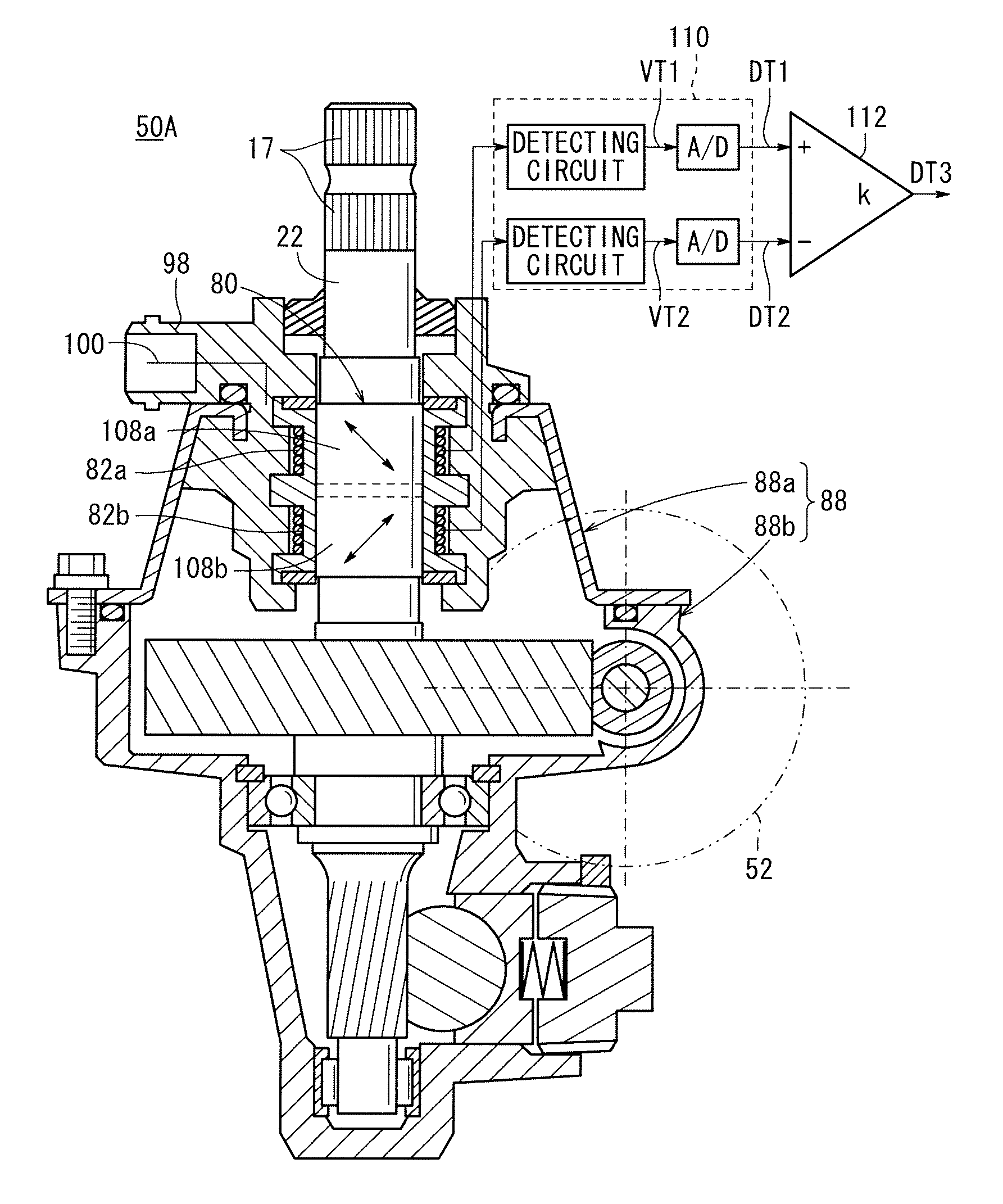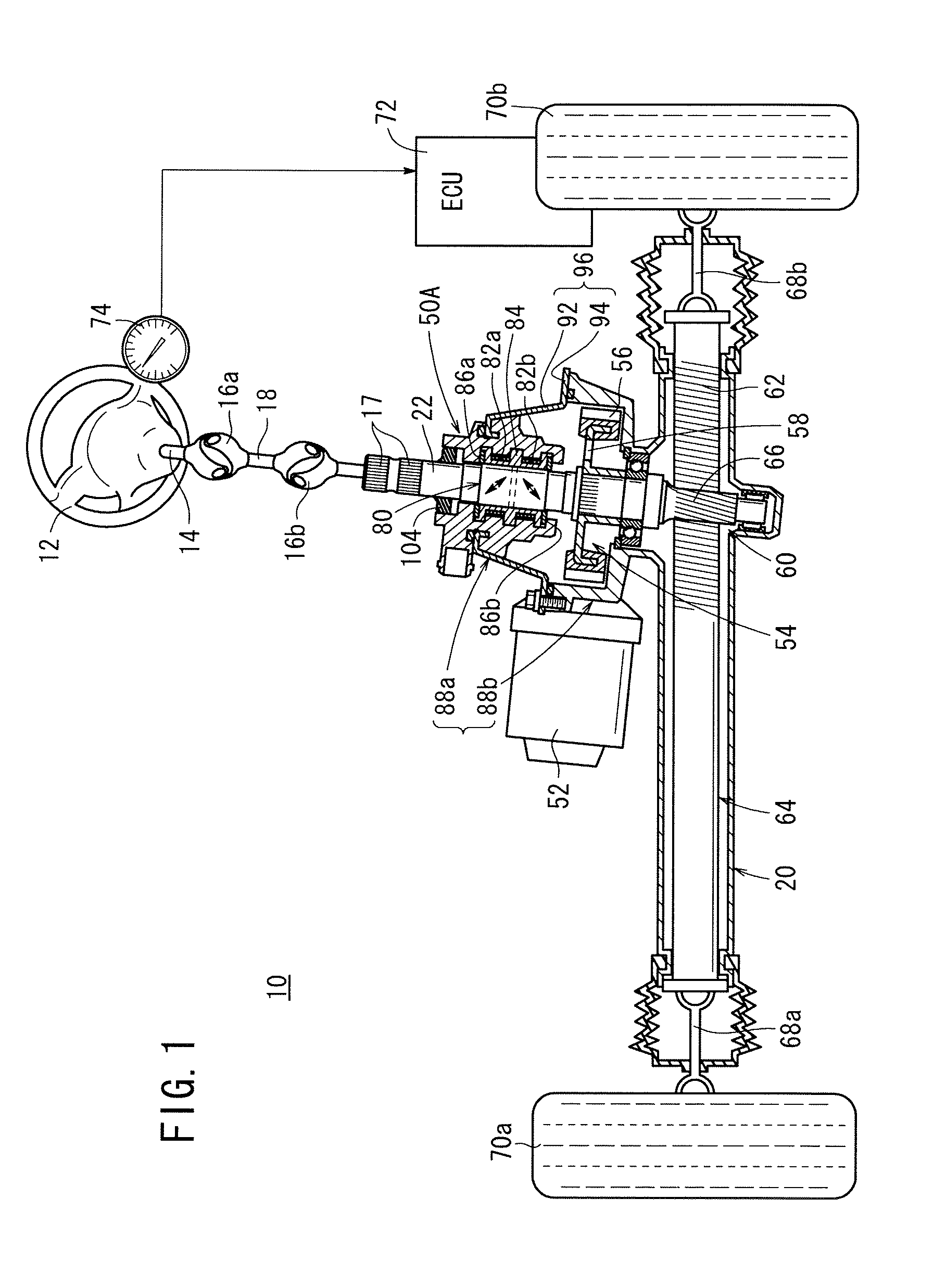Magnetostrictive torque sensor and electrical power steering device
a torque sensor and torque sensor technology, applied in the direction of force/torque/work measurement apparatus, instruments, transportation and packaging, etc., can solve problems such as conductivity failure, and achieve the effect of accurately detecting torque, less susceptible to alternating magnetic fields, and no noise generation
- Summary
- Abstract
- Description
- Claims
- Application Information
AI Technical Summary
Benefits of technology
Problems solved by technology
Method used
Image
Examples
first embodiment
[0076]The steering gearbox 20 includes the steering shaft member 22 (shaft member), a magnetostrictive torque sensor (hereinafter referred to as a “first torque sensor 50A”) which serves as a steering torque sensor for detecting a steering torque applied by the driver, a motor 52 (e.g., a brushless motor) for assisting a steering action made by the driver, a speed reducer 54 (a worm 56 and a worm wheel 58; see FIG. 2) for boosting rotational torque generated by the motor 52, a rack and pinion gear 60, and a rack shaft 64 having formed thereon a rack gear 62 of the rack and pinion gear 60.
[0077]The steering shaft member 22 has one end coupled to the steering wheel 12 by the steering shaft 14, the first universal joint 16a, the intermediate shaft 18, and the second universal joint 16b. The other end of the steering shaft member 22 serves as a pinion gear 66 of the rack and pinion gear 60.
[0078]A rotational torque, which is boosted by the speed reducer 54, is converted into an axial t...
second embodiment
[0168]A magnetostrictive torque sensor (hereinafter referred to as a “second torque sensor 50B”) will be described below with reference to FIGS. 29 and 30.
[0169]The second torque sensor 50B is substantially of the same structure as the first torque sensor 50A described above, but differs therefrom as to the structure of the metal member 96, which includes the tubular part 92 and the flange 94.
[0170]The metal member 96 is not encased within the resin part 90. The metal member 96, which is substantially L-shaped in vertical cross section, is mounted in position with an upper end face thereof held against a flange that includes the lower surface of the connector 98 of the resin part 90, the tubular part 92 is pressed against the resin part 90, and the flange 94 is fastened by bolts 106 to the second housing member 88b. The tubular part 92 is inclined slightly with respect to the axial direction of the steering shaft member 22, as viewed in vertical cross section. A ring-shaped adjustm...
PUM
| Property | Measurement | Unit |
|---|---|---|
| thickness | aaaaa | aaaaa |
| thickness | aaaaa | aaaaa |
| thickness | aaaaa | aaaaa |
Abstract
Description
Claims
Application Information
 Login to View More
Login to View More - R&D
- Intellectual Property
- Life Sciences
- Materials
- Tech Scout
- Unparalleled Data Quality
- Higher Quality Content
- 60% Fewer Hallucinations
Browse by: Latest US Patents, China's latest patents, Technical Efficacy Thesaurus, Application Domain, Technology Topic, Popular Technical Reports.
© 2025 PatSnap. All rights reserved.Legal|Privacy policy|Modern Slavery Act Transparency Statement|Sitemap|About US| Contact US: help@patsnap.com



